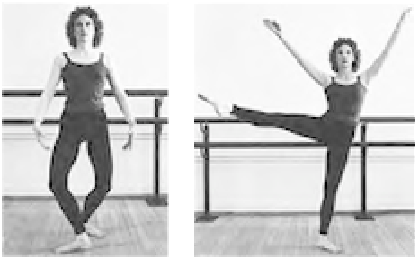Graphics Reference
In-Depth Information
3-5
Words have a
tendency to be misread
and confused with one
another when composed
of letters of similar shape.
A closer look at the alphabet reveals
additional characteristics distinguishing
letters. The upper halves of letters provide
more visual cues for letter recognition than
the lower halves (Fig.
3-3
). Likewise, the
right halves of letters are more recognizable
than the left halves (Fig.
3-4)
. Dominant
letters within the alphabet that aid in
word recognition are those that have either
ascenders or descenders. Through tests,
researchers have contributed valuable
information about the comparative legibility
of each letter in the alphabet. Findings vary
only slightly. Lowercase letters can be ranked
according to their distinctiveness as follows:
d k m g h b p w u l j t v z r o f n
a
x y e i q c s.
This varies, however, with different typefaces.
The most frequently used letters,
such as the vowels
a e i o u
, are among the
most illegible, and
c g s x
are easily missed
in reading. Other letters that often cause
confusion and are mistaken for one another
are
f i j l t
. For example, the words
fail
,
tail
,
and
jail
each begin with letters of similar
shape and could easily be misread. The eye
could possibly perceive
f
as
t
, or
t
as
j
(Fig.
3-5
). The designer should carefully
study the words in display typography
to identify such potential problems in
legibilit y.
The perception of a letter is based
upon the form/counterform relationship.
Counterforms are as significant to legibility
as the shapes of the letters themselves. This
principle relates to all aspects of visual
phenomena. A dancer manipulates space
with the body, “making shape,” defining, and
redefining space (Fig.
3-6
). If the shape of a
letter is changed, so is the way in which that
letter is perceived. Letter shapes are cues that
distinguish one letter in the alphabet from
another (Fig.
3-7
).
3-3
The upper halves of
words are read with ease,
while the lower halves
are less legible.
3-4
More letters remain
recognizable when only
their right halves are
exposed; however, there
are exceptions (
b,p
).
cdo nr
3-6
3-6 and 3-7
As with the changing position of the
dancer, subtle changes in the drawing of the forms and
counterforms significantly affect perception.
3-7
















